Disclosure: This article contains affiliate links. We may earn a commission from purchases at no extra cost to you, which helps our travel content.
As an engineer, I'm constantly amazed by nature's precision systems. But nothing—not even the most sophisticated stadium design I've worked on—compares to witnessing half a million Sandhill Cranes converge on Nebraska's Platte River. This annual migration isn't just a wildlife viewing opportunity; it's a masterclass in natural engineering that's been fine-tuned over millions of years. When my stadium consultation work took me to the American Midwest last spring, I knew I had to make the detour to Kearney, Nebraska—what locals proudly call the 'Sandhill Crane Capital of the World.'
The Mechanics of Migration: Nature's Incredible System
As someone who analyzes structural systems for a living, the migration's logistics fascinate me. These gangly, gray-feathered birds travel up to 400 miles daily on their 5,000+ mile journey from Mexico to their Arctic breeding grounds. The Platte River serves as their critical refueling station—a biological imperative as precisely calculated as any engineering tolerance.
What makes Kearney special is the river's unique shallow, braided channels that create safe roosting habitat. The surrounding cornfields provide essential carbohydrates, while nearby wet meadows offer protein-rich invertebrates. It's essentially a perfectly designed rest stop on the crane highway.
While observing from a blind at the Rowe Sanctuary, I used my spotting scope to study their behavior. The birds gain up to 20% of their body weight during their 3-4 week stopover—a remarkable biological feat that powers the next leg of their journey. Their prehistoric calls, unchanged for millions of years, resonated through my chest in a way that made spreadsheets and stress calculations feel trivially human.
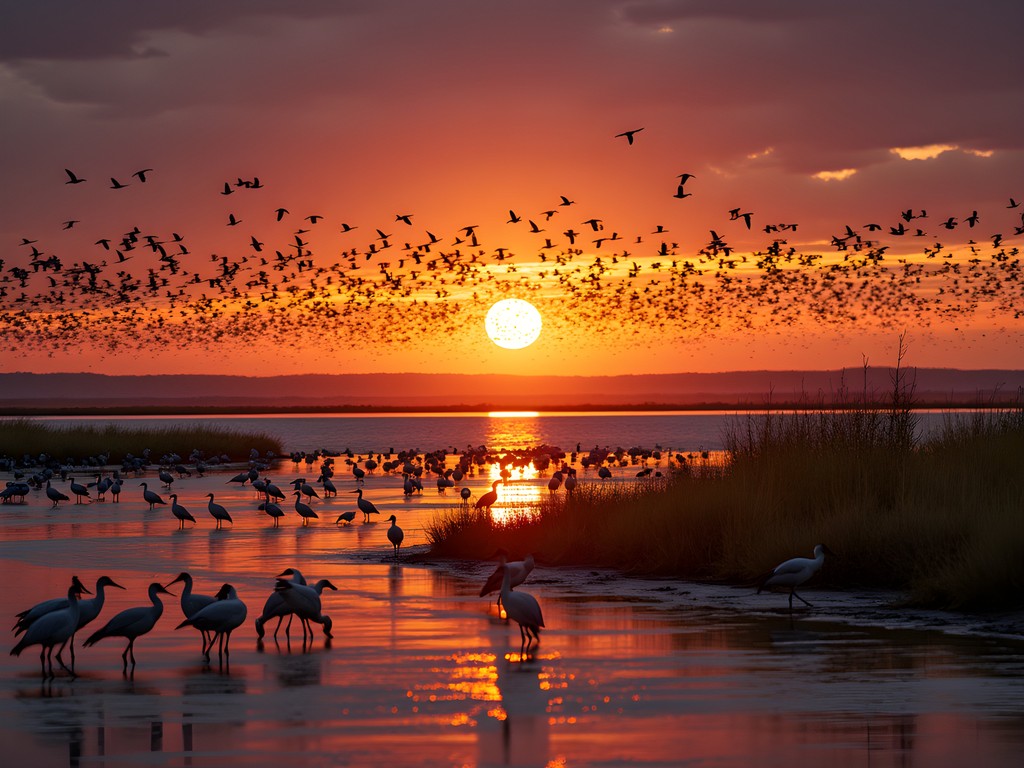
💡 Pro Tips
- Book viewing blind reservations at Rowe Sanctuary months in advance—they sell out quickly
- The Iain Nicolson Audubon Center offers excellent orientation programs before your viewing experience
- Dress in dark, neutral colors and avoid making sudden movements or noises in the blinds
Dawn Patrol: The Morning Lift-Off
If you've ever watched a stadium empty after a championship game, you have a vague reference point for the morning lift-off—except imagine it happening with graceful coordination rather than human chaos. I set my alarm clock for an eye-watering 5:00 AM to ensure arrival at the viewing blind well before sunrise.
The pre-dawn darkness was worth every second of lost sleep. As the horizon began to lighten, an electric energy rippled through the roosting cranes. First came the increased calling—a crescendo of prehistoric trumpeting that built to a fever pitch. Then, as if responding to some invisible conductor, small groups began taking flight. Within minutes, the entire river was emptying in waves of synchronized departure.
What struck me most was the structural efficiency of their movement. Engineers spend careers trying to optimize flow patterns, yet these birds have evolved a nearly perfect system. They rise in spiraling thermals, using the warming air as free elevator shafts to gain altitude before heading out to feeding grounds. I found myself sketching their flight patterns in my notebook, wondering if there might be applications for crowd flow in stadium design.
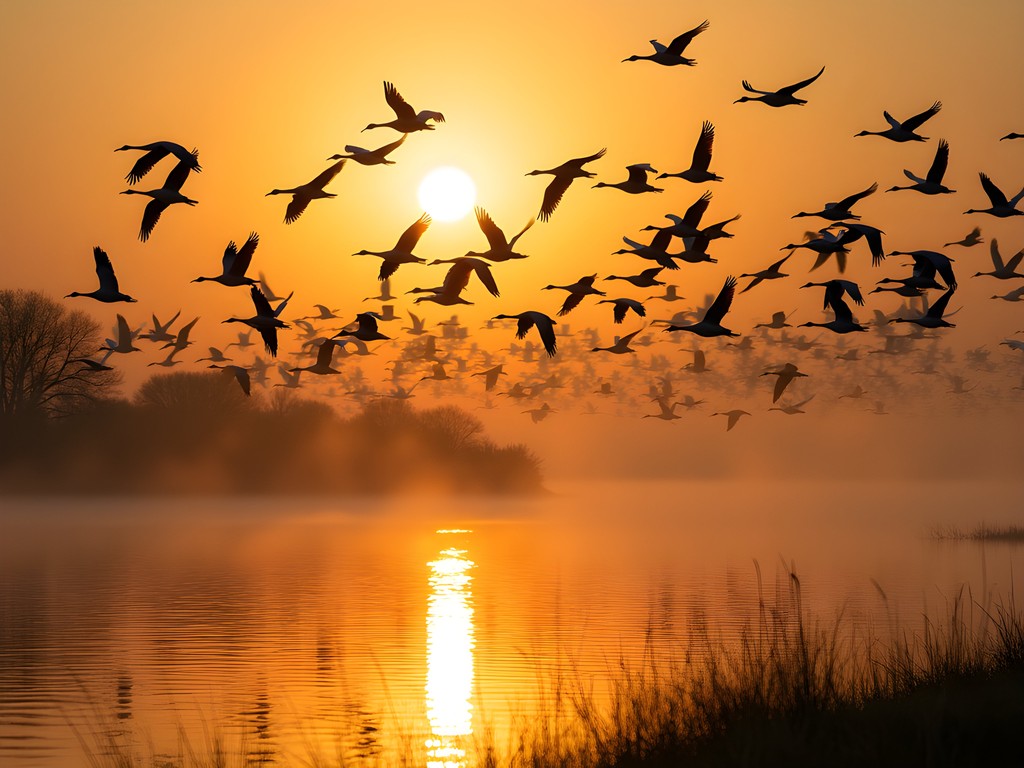
💡 Pro Tips
- Arrive at viewing blinds at least 45 minutes before sunrise for the best experience
- Bring hand warmers in March—pre-dawn temperatures can drop below freezing
- A headlamp with a red light setting is essential for navigating in the dark without disturbing wildlife
Beyond the Blinds: Exploring Crane Country
While the guided blind experiences at sanctuaries provide the most intimate crane encounters, I discovered that Kearney offers multiple vantage points for witnessing the migration. The region has embraced its identity as a crane destination with impressive infrastructure.
I spent one afternoon at Fort Kearny State Recreation Area, where the historic bridge provides excellent viewing opportunities without the need for reservations. My travel thermos filled with hot coffee was essential as I spent hours watching cranes feed in nearby fields.
For a more elevated perspective (both literally and figuratively), I joined a tour at the Crane Trust Nature & Visitor Center near Grand Island. Their 35-foot observation tower offers a spectacular panoramic view of the river and surrounding landscape. The center's knowledgeable guides explained how the cranes' reliance on this specific river segment represents a critical bottleneck in their life cycle—a vulnerability that parallels many of our human systems that depend on irreplaceable infrastructure.
In the evenings, I found myself driving rural roads north of the river at sunset, watching massive flocks return from feeding. The birds would circle above their roosting sites in holding patterns that would make air traffic controllers envious—another reminder of how nature's solutions often parallel our engineered ones, just with millions more years of refinement.
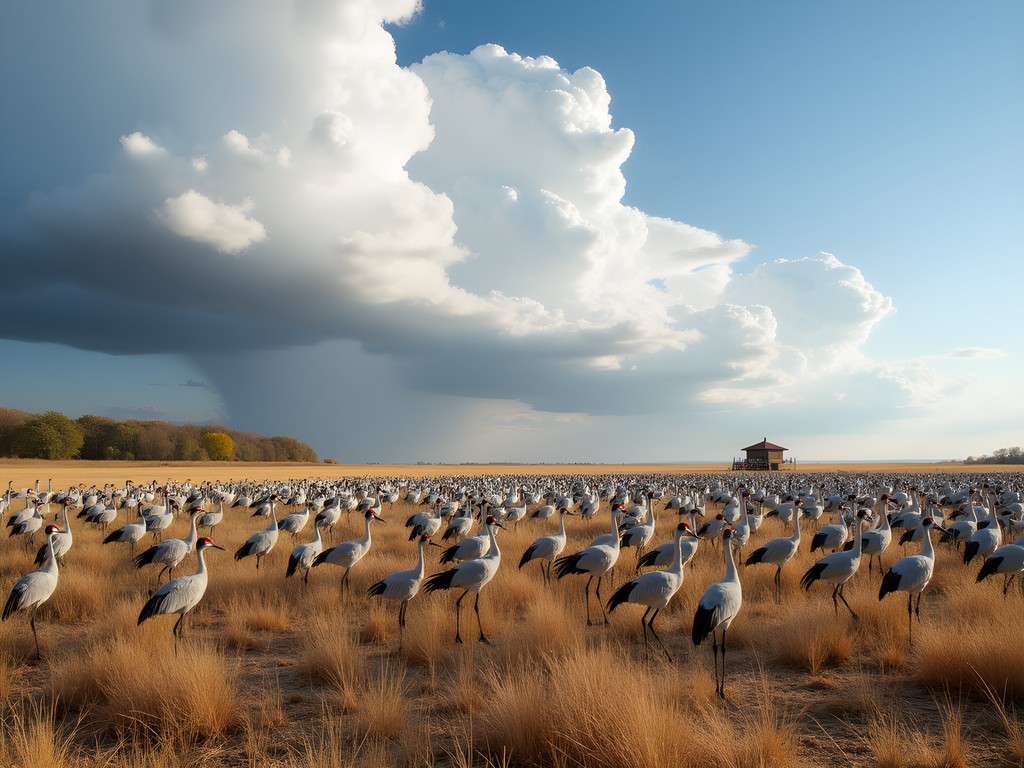
💡 Pro Tips
- Use the Nebraska Flyway birding app to find current crane viewing hotspots
- Respect private property and use designated viewing areas only
- The Central Platte Natural Resources District has excellent free maps of public access points
The Cultural Ecosystem: Kearney Beyond the Birds
While the cranes are undoubtedly the headline attraction, I was pleasantly surprised by Kearney's vibrant crane-season culture. The entire town transforms during migration season, with local businesses embracing the influx of wildlife enthusiasts from around the world.
At the Museum of Nebraska Art (MONA), I explored their special exhibition on crane-inspired artwork, featuring everything from indigenous perspectives to contemporary interpretations. The museum's brick architecture—a repurposed post office—houses an impressive permanent collection worth exploring even if you're not a dedicated birder.
For evening entertainment, I caught a performance at the Crane River Theater, where the talented company puts on productions that often incorporate themes of migration and natural heritage. I logged my daily crane observations in my waterproof notebook while enjoying locally brewed Thunderhead Brewing Company's seasonal Sandhill Crane Ale at their downtown taproom.
The Kearney Visitor Bureau has embraced the crane migration as the city's defining feature, creating a welcoming atmosphere for wildlife tourists. I found myself in conversations with visitors from Japan, Germany, and Australia—all drawn by the same natural spectacle. There's something profoundly connecting about gathering with strangers from across the globe to witness this ancient migration pattern that predates all human borders.

💡 Pro Tips
- Visit the Great Platte River Road Archway Monument for context on the region's natural and human history
- Make dinner reservations in advance—restaurants get extremely busy during crane season
- The Kearney Public Library hosts excellent free lectures by visiting ornithologists during migration season
Gear and Preparation: An Engineer's Approach
As someone who appreciates well-designed tools, I found crane viewing to be surprisingly gear-intensive. The variable March weather in Nebraska demands preparation—I experienced everything from snow flurries to T-shirt temperatures in a single weekend.
Layering is essential. I started with a moisture-wicking base layer topped with a fleece mid-layer and finished with my waterproof shell jacket. Early mornings in the blinds are frigid, with temperatures often below freezing, so I was grateful for my heated insoles that kept my feet comfortable during the pre-dawn viewing sessions.
For optics, I alternated between my spotting scope and a quality pair of binoculars depending on distance. The cranes are sensitive to movement, so having adequate magnification means you can observe their fascinating behaviors without causing disturbance.
Sound proved to be an unexpectedly important part of the experience. The collective vocalizations of thousands of cranes create what locals call the 'river roar'—a primeval soundscape unlike anything I've heard in my engineering career. I captured audio recordings using my portable recorder to reference later when explaining the experience to colleagues back in Ireland.
Finally, don't underestimate the importance of patience. The cranes operate on their own schedule, not yours. The migration viewing experience rewards those who can settle in, quiet their minds, and simply observe—a rare skill in our hyperconnected world.
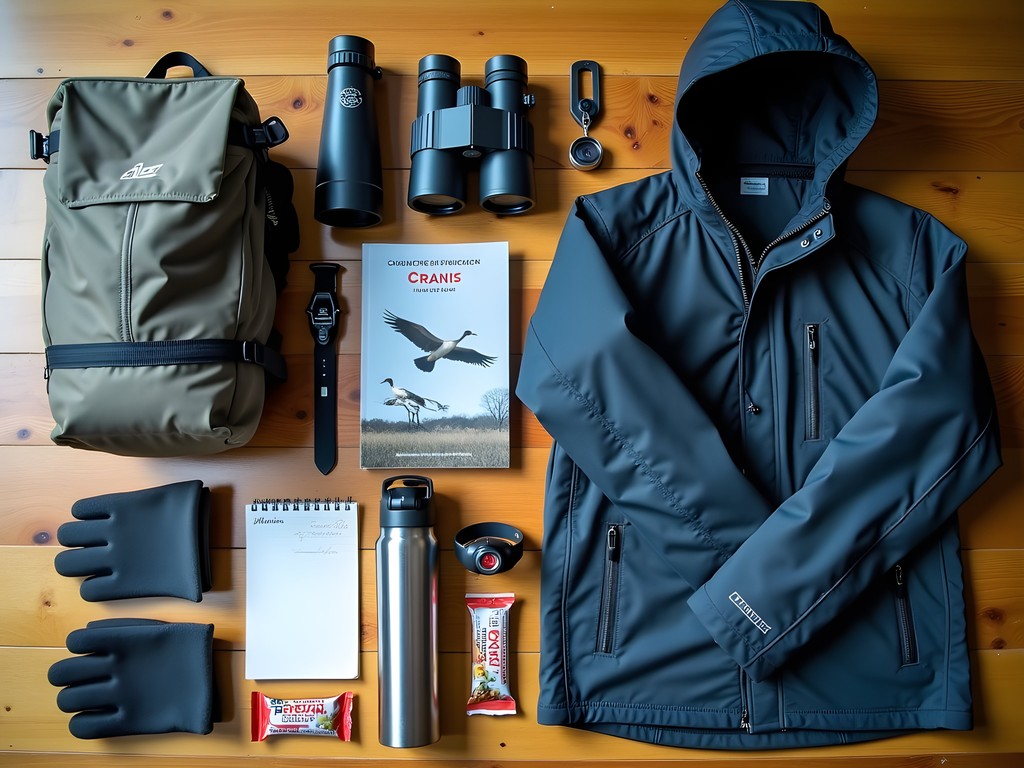
💡 Pro Tips
- Bring a blind bag with compartments to organize gear in the dark
- Pack high-protein snacks—viewing sessions can last 3+ hours without breaks
- A small seat cushion makes blind benches much more comfortable
Final Thoughts
As I boarded my flight back to Ireland, I found myself mentally redesigning the Platte River experience—not because it needs improvement, but because that's how my engineer's mind processes profound experiences. The migration represents a perfect intersection of natural systems, environmental conservation, and community engagement that we could apply to many human endeavors.
The Sandhill Crane migration isn't just a wildlife spectacle; it's a reminder of what successful systems look like when refined over millennia. In our rush to build and innovate, we sometimes forget to observe nature's elegant solutions to complex problems.
I've consulted on stadiums across Europe that hold similar numbers of beings as the cranes on the Platte, yet none match the organic efficiency of this annual gathering. If you're seeking an experience that combines wildlife viewing with deeper insights into natural systems, Kearney's crane migration should top your list. Just remember to book early, pack layers, and bring your sense of wonder—this is one spectacle where the engineering is best appreciated not by analyzing, but by simply being present.
✨ Key Takeaways
- Book blind reservations at Rowe Sanctuary 2-3 months in advance for prime viewing
- The migration peaks from mid-March to early April, with the second and third weeks of March typically offering the highest crane numbers
- Morning and evening viewing sessions offer different but equally spectacular experiences
- The Kearney area offers multiple viewing locations beyond the main sanctuaries
- Proper cold-weather gear is essential for comfortable early morning viewing sessions
📋 Practical Information
Best Time to Visit
Mid-March to early April, with peak typically in the third week of March
Budget Estimate
$500-800 for a weekend (accommodations, blind reservations, meals, and car rental)
Recommended Duration
3-4 days minimum to experience multiple viewing sessions
Difficulty Level
Easy

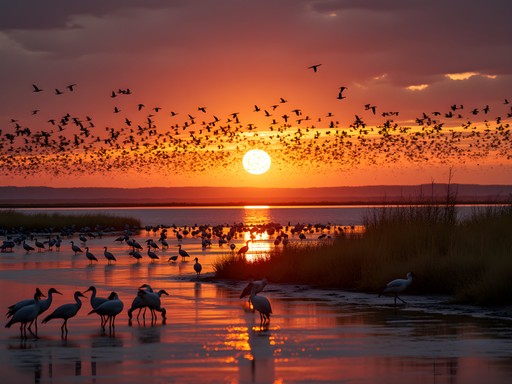
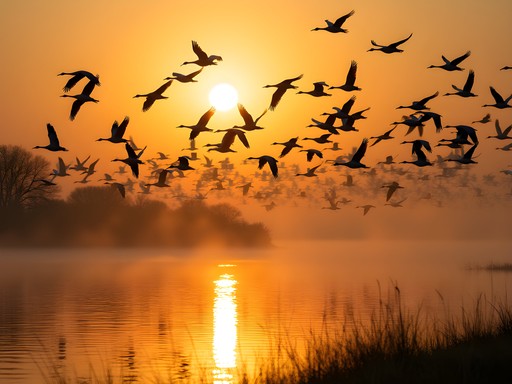
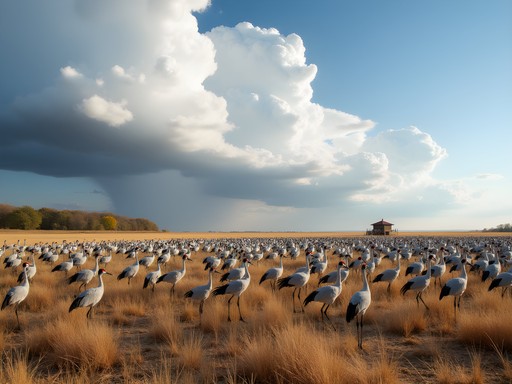
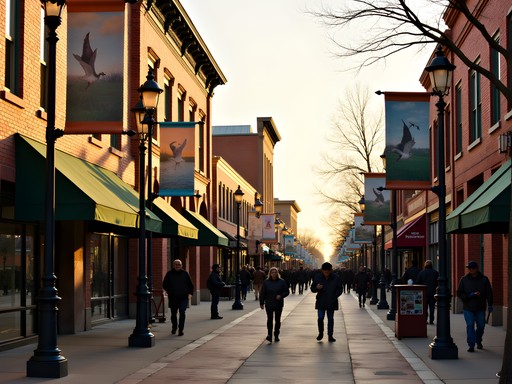
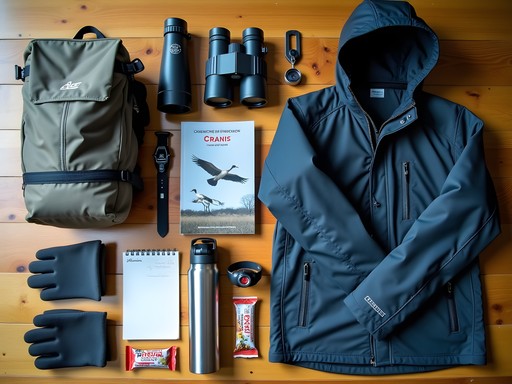


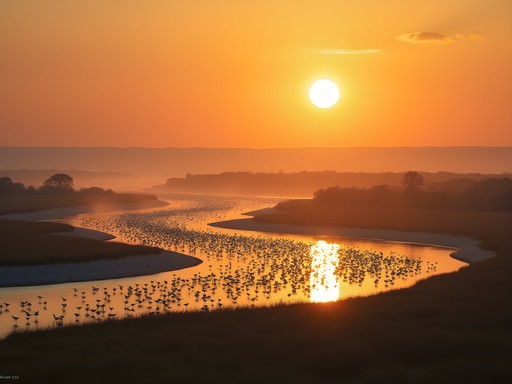
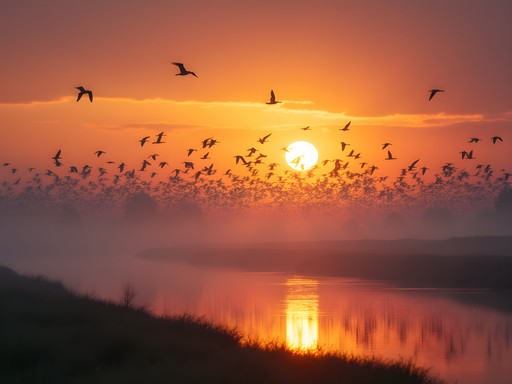

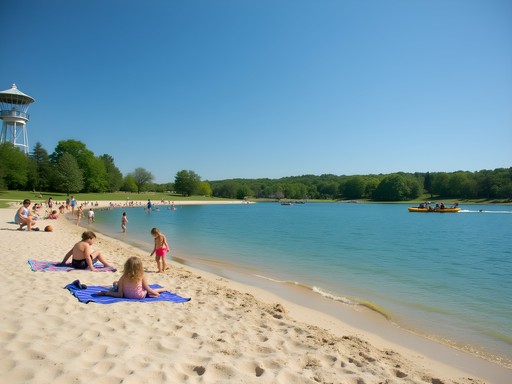




Comments
wintermaster
Just booked my return trip for next spring! Pro tip: stay in Grand Island instead of Kearney if Kearney hotels are full or expensive. It's only 45 mins away and has cheaper options.
happyninja
This looks amazing! Is it suitable for kids? My 8 and 10 year olds love birds but can they sit quietly in the blinds?
wintermaster
My nephew (9) loved it! The guides are great with kids. Just prepare them for early mornings and sitting still. Bring binoculars their size and snacks!
John Hart
Alex, your engineering perspective brings a fresh analytical dimension to what is fundamentally a profound emotional experience. Having photographed wildlife migrations across six continents, I can attest that the Sandhill Crane gathering along the Platte is uniquely accessible compared to many global migration events. For serious photographers, I recommend investing in a telephoto lens which offers the reach needed without breaking the bank. The morning fog rising off the river creates extraordinary backlighting opportunities. Did you notice how the cranes' communication patterns intensify just before major movements? Their vocalizations follow distinct patterns that signal collective decision-making—a fascinating study in natural consensus algorithms.
dreamnomad
When's the absolute peak time to see the most cranes? Is early March better than late March?
John Hart
In my experience documenting migrations across three continents, mid-March tends to be the statistical peak for Sandhill Cranes in Nebraska. However, climate variations are shifting patterns slightly. The Crane Trust website posts weekly counts that can help you time your visit. I'd recommend the second or third week of March for maximum density.
dreamnomad
Thanks John! That's super helpful. Will plan for mid-March then.
Nicole Russell
Alex, your engineer's perspective on the crane migration is so refreshing! I visited Kearney last March and was absolutely mesmerized. For anyone planning to go, I'd recommend booking your blind spots at Rowe Sanctuary at least 3-4 months in advance - they fill up FAST. The sunrise viewing was magical, but don't skip the evening experience either. The sound of thousands of cranes coming in to roost at sunset literally gave me goosebumps! Has anyone else experienced both morning and evening viewings? I'm curious which one people preferred!
wintermaster
I did both! Morning was peaceful but freezing cold. Evening had better light for photos and more dramatic arrivals. Bring warm layers either way!
Nicole Russell
Great point about the layers! I underestimated how cold it would get sitting still in those blinds for hours.
roamace
Wow, I had no idea Nebraska had something this spectacular! Adding to my bucket list.
beachblogger
Never thought Nebraska would be on my travel radar, but you've convinced me! I'm curious about the cultural aspects you mentioned - what were the highlights beyond the crane viewing? Any museums or local events worth checking out while there?
sunsetwalker
Not the author but when I went we loved the Museum of Nebraska Art in Kearney! Great prairie-inspired works.
Sage Dixon
Alex, your engineer's eye caught details most would miss! I've been to crane migration sites worldwide (Japan, Estonia, Israel), but Kearney remains special. Last year I spent a week there doing a solo photography project, sleeping in a blind for two nights. The predawn hours were magical - hearing the cranes wake up before you can see them, then watching the world slowly illuminate with thousands of gray shapes coming into focus. For serious wildlife enthusiasts: the volunteer programs let you get involved with conservation efforts. And the Crane Trust's overnight experiences are worth the splurge - you'll get access most tourists never see. Brilliant post that captured both the natural wonder and the human connection to this ancient migration.
BirdingBuff
That shot of the cranes against the sunset is absolutely stunning! What camera setup did you use?
tripqueen
How far in advance should I book accommodations if planning a trip for next spring?
Sage Dixon
Book at least 6 months ahead for the prime viewing spots like Rowe Sanctuary or Crane Trust. Hotels in Kearney fill up fast during migration season too!
Venture X
Premium card with 2X miles, $300 travel credit, Priority Pass